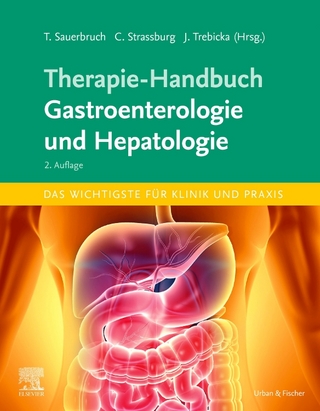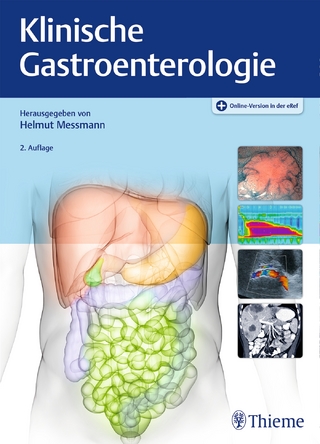
Immunophysiology of the Gut
Academic Press Inc (Verlag)
978-0-12-732085-4 (ISBN)
- Titel ist leider vergriffen;
keine Neuauflage - Artikel merken
Bristol-Myers Squibb/Mead Johnson Nutrition Symposia, Volume 11: Immunophysiology of the Gut represents a comprehensive and systematic coverage of the immunophysiology of the gut, compiling research that integrates the mucosal immune system and intestinal physiology. This book discusses the immunological regulation of epithelial function, fibroblastic sheath, pathways of arachidonic acid metabolism, and gastric response to mucosal anaphylaxis. The implications for inflammatory diarrhea, role of breast milk in neonatal host defense, and milk-borne peptide growth factors in human and bovine milk are also elaborated. This publication likewise covers the immunopathologic features of celiac disease, immune responses in protein-energy malnutrition, and bacterial translocation. This volume is suitable for experts and clinicians from the disciplines of mucosal immunology, intestinal physiology, and enteric neurophysiology.
Contributors
Sponsor's Foreword
Foreword
Preface
Part I Immunophysiology of the Gut
1 Immunological Regulation of Epithelial Function
I. Introduction
II. Discovery—Evidence of Immune Regulation of Epithelial Function
III. Integration—"Patterns That Connect"
IV. Application—Protection, Reconstruction, Attenuation, and Augmentation of Mucosal Immune Responses
References
2 Mesenchymal-Epithelial Interactions: The Subepithelial Fibroblastic Sheath as a Paracrine Modulator of Inflammation-Induced Intestinal Secretion
I. Introduction
II. The Fibroblastic Sheath
III. Methods
IV. Results
V. Discussion
References
3 Immune Regulation of Intestinal Arachidonic Acid Metabolism: Effects on Intestinal Water and Electrolyte Transport
I. Introduction
II. Pathways of Arachidonic Acid Metabolism
III. Immune and Inflammatory Mediators That Stimulate Intestinal Arachidonic Acid Metabolism
IV. Cellular Origin of Stimulated Increases in Arachidonic Acid Metabolites
V. Cellular Mechanisms for Immune Regulation of Arachidonic Acid Release and Metabolism
VI. Mechanisms of Action of Arachidonic Acid Metabolites on Intestinal Secretion
VII. Conclusions
References
4 Gastrointestinal Anaphylaxis: Effect on Gastric and Intestinal Function
I. Introduction
II. Animal Model
III. The Gastric Response to Mucosal Anaphylaxis
IV. Intestinal Response to Acute Anaphylaxis
V. Intestinal Response to Chronic Anaphylaxis
VI. Summary
References
5 Acute and Chronic Control of Colonic Chloride Secretion by Mast Cell Mediators
I. Introduction
II. Acute Effects of Mast Cell Mediators on T84 Cells
III. Chronic Effects of Mast Cell Mediators on T84 Cells
IV. Implications for Inflammatory Diarrhea
References
Part II Lymphokines and Mucosal Immune Function
6 Cytokines and Immune Regulation: An Overview
I. Introduction
II. The Regulation of IgE and IgG1 Antibody Production
III. Cytokine Production by T-Cell Subsets
IV. The Regulation of IgA Production
V. Conclusions
References
7 Antigen-Independent and Antigen-Dependent Development of Mucosal Immunity and Hypersensitivity
I. Introduction
II. Antigen-Independent Development of the Mucosal Immune System in the Human Fetus
III. Cell-Mediated Immune Responses in Intestinal Mucosa Using Explants of Fetal Gut
IV. Activated T Cells in Intestinal Diseases
References
8 Interferon-? and Class II Antigen Expression on Enterocytes
I. Introduction
II. Expression of Class II Antigens on Intestinal Enterocytes
References
9 Modeling the Intestinal Crypt Abscess-A Characteristic Lesion of Acute Intestinal Inflammation
I. Introduction
II. Model Intestinal Epithelium
III. Polymorphonuclear Leukocyte Transmigration Across T84 Monolayers
IV. The Crypt Abscess
V. Summary
References
10 Role of Lymphokines in Function of Gastrointestinal Mucosal T Cells
I. Introduction
II. Cell Surface Glycoprotein Expressed by Mucosal T Cells
III. Lymphokine Production by Mucosal T Cells in Vitro
IV. Lymphokine Utilization by Mucosal T Cells in Vitro
V. Immunoregulatory Function of Intestinal T Cells in Vitro
VI. Evidence of Lymphokine Production in Response to Specific Antigens
VII. T-Cell Lymphokine mRNA Expression in Vivo in Normal and Inflamed Intestinal Mucosa
VIII. Implications of Mucosal T-Cell Lymphokine Production
References
11 Cytokine Production in the Gastrointestinal Tract During Inflammation
I. The Cytokine Network
II. Inflammatory and Immunoregulatory Cytokines
III. Interleukin 1
IV. Interleukin 2
V. Interleukin 2 Receptor
VI. Interferon-?
VII. Interleukin 4
VIII. Cytokines in the Pathogenesis and Therapy of Inflammatory Bowel Disease
References
Part III Endocrine Effects on Mucosal Immune Function
12 Neuroimmune Interactions in the Regulation of Mucosal Immunity
I. Introduction
II. Neuroimmune Regulation
III. Mast Cells and Nerves
IV. Nerve Growth Factor
V. Neuronal Remodeling During Inflammation
VI. Summary
References
13 Sex Hormone, Glucocorticoid, and Cytokine Regulation of Mucosal Immunity: Hormonal Influences on Antibody Levels and Antigen Presentation in the Female Genital Tract
I. Introduction
II. Hormonal Regulation of Antibodies in Uterine and Cervicovaginal Secretions
III. Effect of Glucocorticoids on Mucosal Immunity
IV. Influence of Antigen and Interferon-? on Secretory Component and IgA in the Rat Uterus
V. Major Histocompatibility Complex Class II Expression and Antigen Presentation by Epithelial and Stromal Cells from the Rat Uterus
VI. Conclusions
References
14 Enteric Neuroimmune Interactions
I. Introduction
II. Enteric Neuroimmune Communication
III. Responses of Enteric Neurons to Immune Signals
IV. Neuronal Behavior in the Sensitized Intestine
V. Clinical Implications of Neuroimmune Communication
References
15 Neuroimmune Amplification and Inhibition of Mucosal Function
I. Introduction
II. Methods
III. Results and Discussion
IV. Conclusions
References
Part IV Nutrition and Mucosal Host Defense
16 Breast Milk: Role In Neonatal Host Defense
I. Introduction
II. Qualities and Capacities of Human Milk in Host Defense
III. Breast-Feeding of the Neonate in Different Populations
IV. The Effects of Breast-Feeding on the Neonate
V. Conclusions
References
17 Milk-Borne Peptide Growth Factors in Human and Bovine Milk
I. Introduction
II. Hormonally Active Peptides in Human and Bovine Milk
III. Fate of Milk-Borne Growth Factors in the Neonate
IV. Conclusions
References
18 The Serologic and Mucosal Immunologic Basis of Celiac Disease
I. Introduction
II. Normal Features of Mucosal Immunity
III. Immunopathologic Features of Celiac Disease
IV. Putative Immunopathologic Mechanisms in Celiac Disease
V. Summary
References
19 Food Allergy—Role of Mucosal Immune Regulation and Oral Tolerance: Facts, Fiction, and Hypotheses
I. Introduction
II. Genetic Influences
III. Lumenal Factors Involved in Gastrointestinal Immunoregulation
IV. Immunological Consequences of Antigen Presentation to the Gut-Associated Lymphoid Tissues
V. The Role of the Enterocyte in Antigen Presentation
VI. Regulatory T-Lymphocyte Subsets in the Lamina Propria and Intestinal Epithelium
VII. T-Lymphocyte Effectors in Murine Gut-Associated Lymphoid Tissues After Antigen Exposure
VIII. Intestinal Antigen Exposure via Breast Milk
IX. Control of IgE Responses
X. Oral Antigen Administration in the Neonatal Period and Subsequent Immune Response
XI. Antibody Transfer via Breast Milk
XII. Possible Clinical Consequences of Breakdown of Mucosal Immunoregulation
XIII. Oral Tolerance and Autoimmunity
XIV. Conclusion
References
Part V Effects of Nutritional Factors and the Microenvironment on Mucosal Immune Function
20 Effect of Intestinal Microenvironment on Mucosal Immune Response to Viruses
I. Introduction
II. Changes in the Natural Environment of the Gut
III. Immunological Effects of the Intestinal Microenvironment
IV. Conclusion
References
21 Nutritional Deficiencies and Intestinal Mucosal Immunity
I. Introduction
II. Immune Responses in Protein-Energy Malnutrition
III. Selected Nutrient Deficiencies
IV. Mucosal Immunity
V. Practical Significance
References
22 Enteric Versus Parenteral Feeding and Mucosal Function
I. Introduction
II. Bacterial Translocation
III. Lumenal Contents
IV. Nutritional Factors
V. Regulation
VI. Summary
References
Summary, Conclusions, and Future Projections
Index
| Erscheint lt. Verlag | 29.6.1993 |
|---|---|
| Verlagsort | San Diego |
| Sprache | englisch |
| Gewicht | 820 g |
| Themenwelt | Medizinische Fachgebiete ► Innere Medizin ► Gastroenterologie |
| Studium ► 1. Studienabschnitt (Vorklinik) ► Physiologie | |
| Studium ► Querschnittsbereiche ► Infektiologie / Immunologie | |
| ISBN-10 | 0-12-732085-7 / 0127320857 |
| ISBN-13 | 978-0-12-732085-4 / 9780127320854 |
| Zustand | Neuware |
| Haben Sie eine Frage zum Produkt? |
aus dem Bereich


